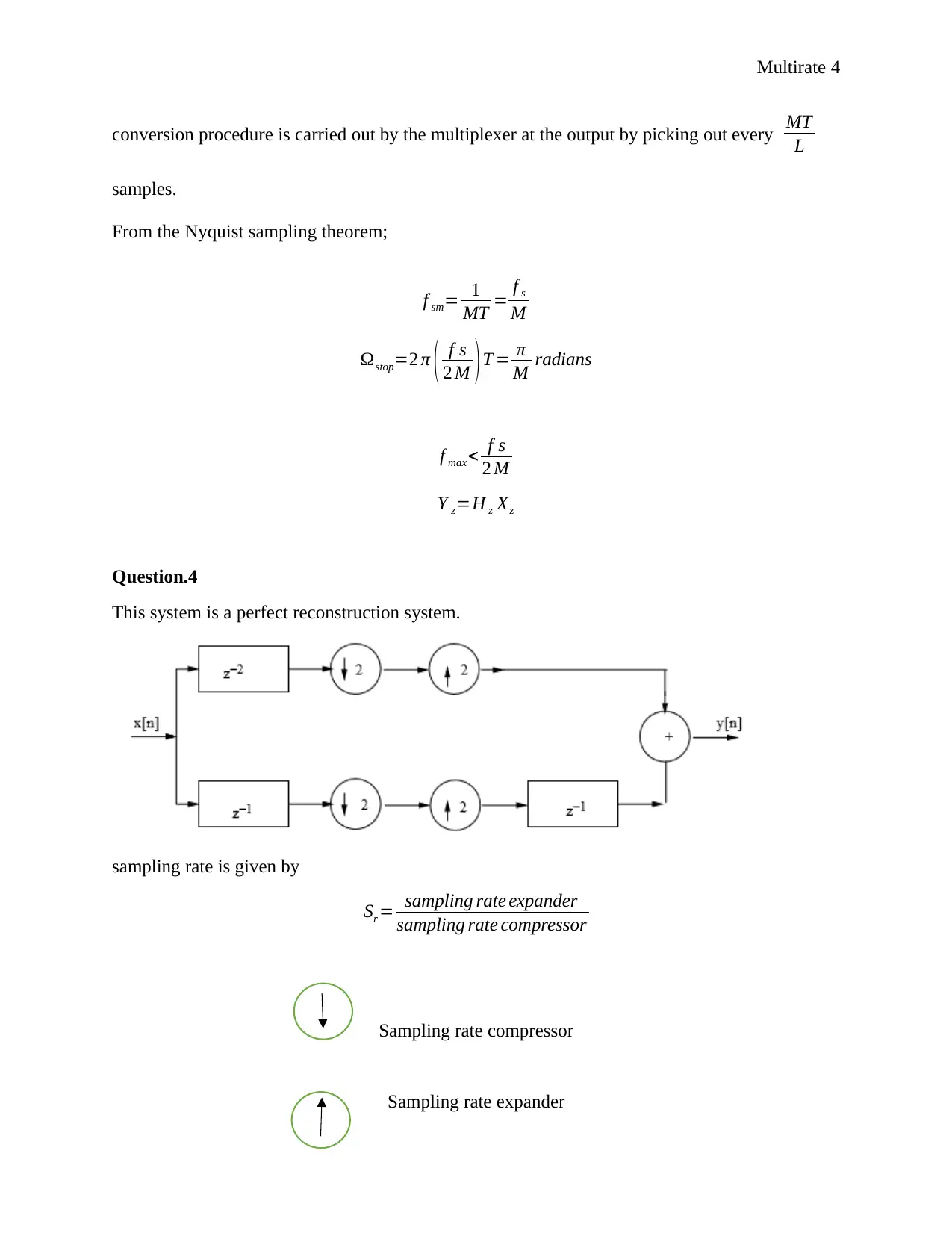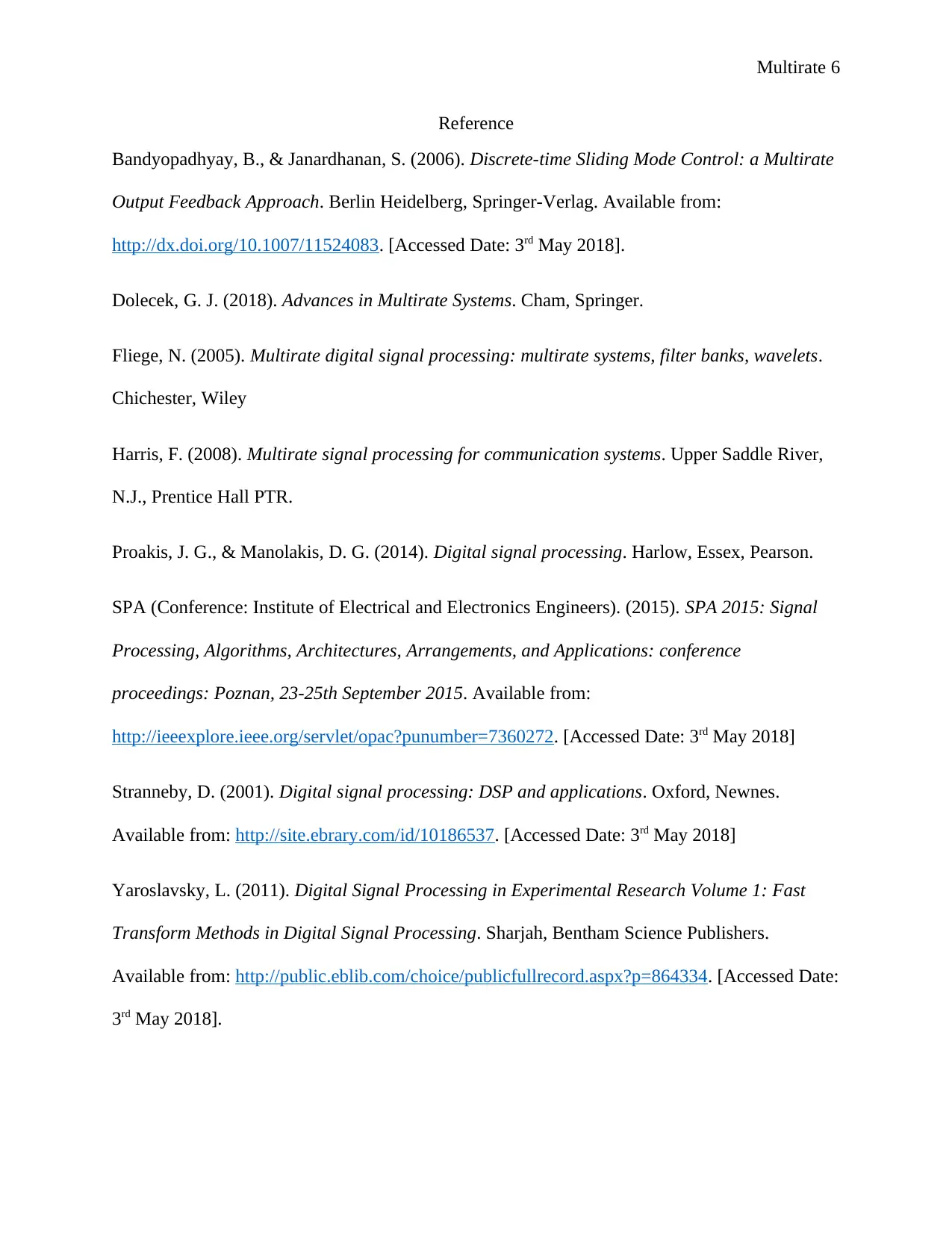Multirate Signal Processing Assignment: Problem Solutions
VerifiedAdded on 2023/06/12
|7
|1005
|380
Homework Assignment
AI Summary
This document presents a solved assignment on multirate signal processing, addressing several key problems. The first question utilizes the noble identity to demonstrate an efficient implementation of a down-sampling process involving a filter. The second question involves drawing the discrete-time Fourier transforms of signals after down-sampling and interpolation. The third question discusses interpolation, cutoff frequency, and the Nyquist sampling theorem. The fourth question examines a perfect reconstruction system, analyzing sampling rates and transfer functions. Finally, the fifth question focuses on determining the transfer function of a system comprising expanders and compressors. The solutions provide detailed steps and explanations, supported by references to relevant academic sources.
1 out of 7














![[object Object]](/_next/static/media/star-bottom.7253800d.svg)